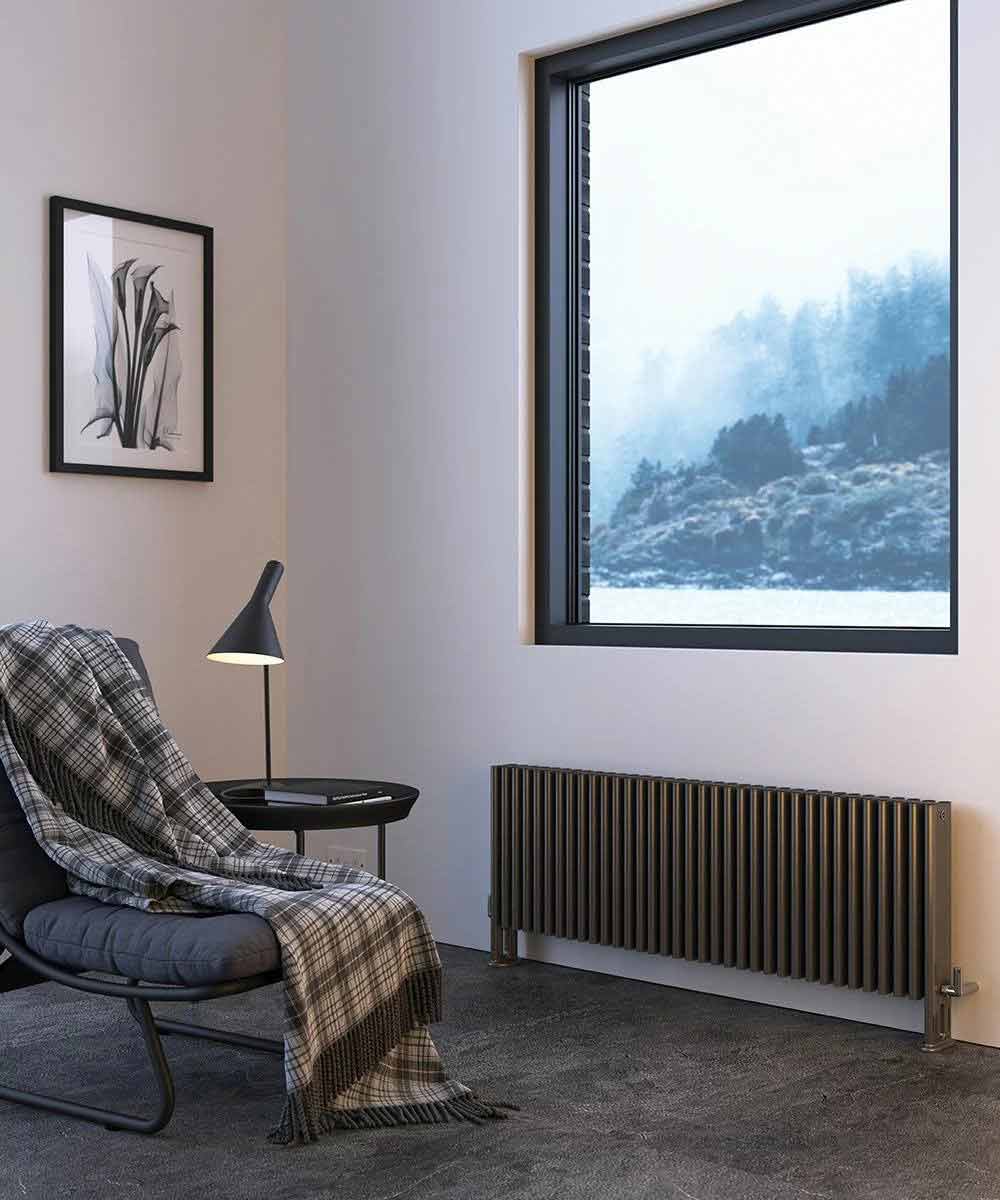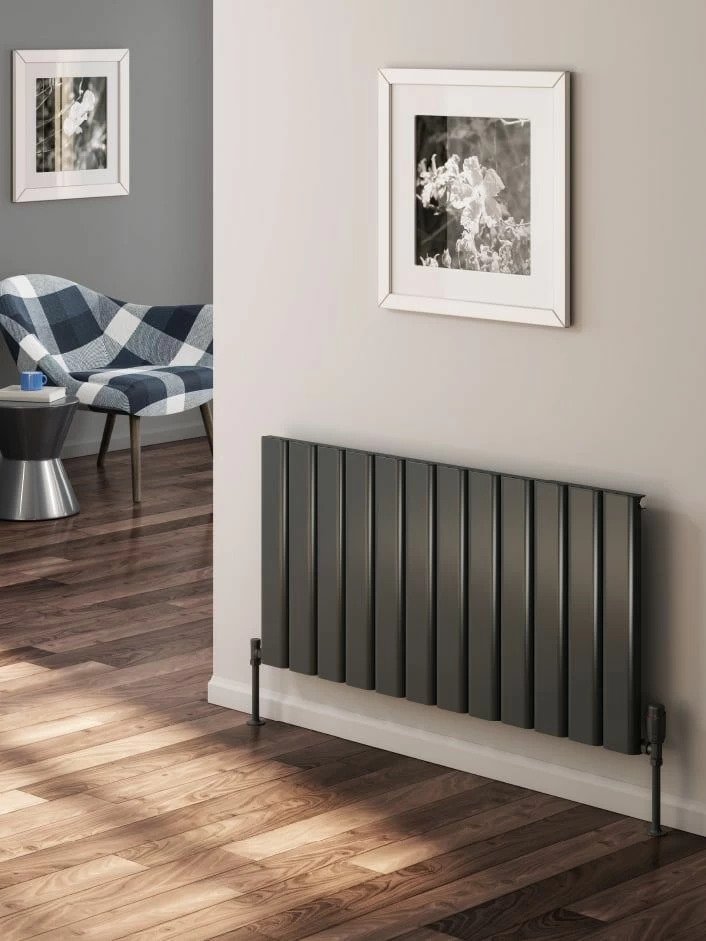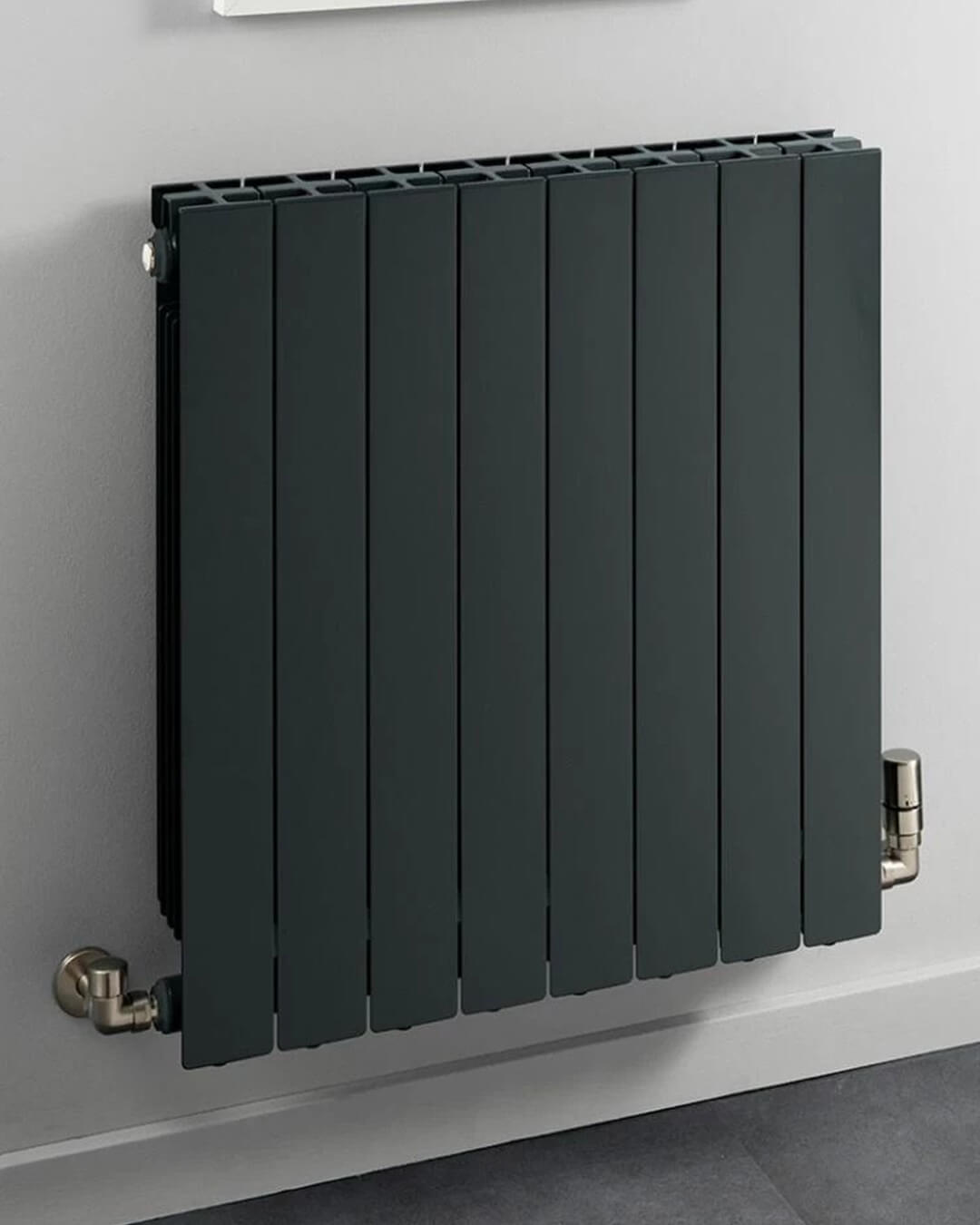JavaScript seems to be disabled in your browser. For the best experience on our site, be sure to turn on Javascript in your browser.


A Guide To Air Source Heat Pumps And Your Radiators

An Introduction To Air Source Heat Pumps (ASHP)
The government recently announced a new scheme in which households can receive up to £5000 to replace their old gas boilers with low carbon air source heat pumps. The incentive, announced as part of a bid to cut down on energy emissions and protect the environment, will help to reduce the country's fossil fuel use and take the UK closer to its goal of net-zero climate emissions by 2050.
The scheme could also allow an increasing number of households to avoid financial hardship due to ongoing global spikes in gas prices. Plus, it is estimated that a nationwide move towards heat pump systems will support around 240,000 jobs by 2035. By 2025 it is expected that fossil fuel boilers - those which run on gas or oil - will be banned from installation in newly built homes. Low carbon alternatives such as domestic heat pump systems will become commonplace instead.
Although the move towards low carbon heating is very much welcomed, many people are new to the concept of heat pumps. We're getting increasing questions about what heat pumps are, how they work, how much they cost, and whether specialist radiators are needed with heat pump systems.
What Is An Air Source Heat Pump?
A heat pump is an electric device that works a little like a reverse fridge. It draws heat in from the air outside the home and blows it over a refrigerant liquid housed in a series of tubes. The liquid is warmed up and turns into gas. A compressor is used on this gas to increase pressure, which boosts the temperature of the gas until it becomes hot. The hot gas passes into a heat exchanger, where it heats water or air, circulated around the home. Then, the refrigerant cools down and condenses back into a liquid before the cycle begins again.
You can feed heat pumps into a property's existing wet central heating system, and in these cases, it is the water heated at the heat exchange portion of the process. These pumps are known as air-to-water heat pumps. Another type of heat pump, known as an air-to-air heat pump, heats air at the heat exchange portion of the process. This heat is then fed into the home via a series of fans, which means you must also install an air circulation system. Air-to-air heat pumps do not produce hot water, and these systems are not eligible for the government's low carbon heating schemes. Air-to-water systems are what is usually referred to when people mention air source heat pumps in the UK.

After the water in a home's wet central heating system has been heated up by the pump, it is transferred to the home's radiators or underfloor heating system. The hot water is also sent to and stored in a hot water cylinder ready to be run from taps and showers.
Heat pumps are installed outside properties, and they look a lot like air conditioning units. Electricity is used to run them, so they are not an utterly carbon-free method of heating. However, the amount of electricity required to heat the home via an air source pump is relatively small. Contrary to popular belief, the outside air temperature does not need to be very high for the pumps to work. When the temperature is very low outside - even below freezing - air source heat pumps work very efficiently to heat the home and its hot water.
How To Work Out The Wattage Needed To Heat Your Space

Our most common radiator delta ratings are T70, T50 and T30.
To find out how many watts your space needs to be warm, first use our watts calculator.
To the right is a table of the delta rating conversions. We have provided this to help you understand the process of working out what type of radiator (and how many) you’ll need to heat your space, we have included an example below.
Let’s say you need 2000 watts to heat your space. If the radiator you desire is a T70, you’d take the 2000 and multiply it by 1.55 (3,100 Watts). As you can see a T70 would sufficiently heat the space.
From here you can work out how many radiators you’d need for the other delta ratings.
2000 X 1 = 2000 (T50)
2000 X 0.51 = 1,020 (T30)
As you can see from the sums above, a T50 radiator would sufficiently heat the space. However, you would need 2 T30s radiators to heat the space to an adequate temperature.
Cost Of Air Source Heat Pumps & Financial Benefits In The UK
Air source heat pumps tend to be more expensive than new gas or oil-fired boilers. Their price varies between £6000 and £18000 depending on the type of pump being installed and property size. On average, you can expect to pay around £10,000 for a new heat pump in the UK. It is also essential to consider whether you might need new radiators and additional insulation to ensure the home is adequately heated since air source heat pumps do not output as high temperatures as gas and oil heating systems.
It is expected that as demand for heat pump installation increases, the costs will come down. With enough time, installing an air source heat system should be as affordable as installing a new gas boiler currently. Until then, the government-backed grant of up to £5,000 could go a long way in helping homeowners afford a heat pump system.
£450 million has been allocated by the government to subsidise air source heat pump installations in UK homes over the next three years. The funding is set to begin in April 2022, so now is the time to start researching and planning for the switch if you want to take advantage of the scheme.
It might also be possible to offset the cost of a heat pump with enrolment on the Domestic Renewable Heat Incentive, which is designed to reward people financially for using renewable energy sources to heat their homes. Members of the scheme are paid quarterly tariffs for seven years, with the amount paid depending on the amount of renewable, clean heat they are estimated to produce. Air source heat pumps are a source of renewable heat energy and can be valid for this scheme, provided that the scheme's rules are followed carefully. However, new applications are only being taken up until the end of March 2022.
Pros And Cons Of Air Source Heat Pumps
A major pro of an air source heat pump is its low carbon footprint. In addition to this, heat pumps offer excellent efficiency, and their running costs are closely matched to those of fossil fuel heating systems.
The major downside of heat pumps in the UK is their high installation costs, but with the new government grants available, they are becoming more accessible. Furthermore, heat pumps tend to require very little maintenance, and they have a long service life, which means you're unlikely to have to pay much out to keep them running once they are installed.
Heat pumps require a good amount of outdoor space to be installed, which is a con. They can also be somewhat noisy. However, some people might prefer to have their heating system installed outside rather than have a traditional boiler taking up space inside the home.
Finally, the lower heat output of air source heat pump systems might be seen as a con. However, given that they can be used with standard radiators and many homes already have radiators suitable for heat pumps, this shouldn't pose too much of a problem for most homeowners.
Can I Heat My Radiators With A Heat Pump?
Many people believe that heat pumps must be used with underfloor heating because their temperature output is not as high as traditional gas boilers. It is thought that radiators are not large enough to deliver adequate heat around the home. However, this is not the case. You can use an air source heat pump to power radiators, and for many domestic properties, the existing radiators are suitable.
Although gas boilers can output very high temperatures, they generally run no higher than up to 65°C. Any hotter and radiators pose a burn risk. Some heat pumps are actually capable of the same temperatures, but they tend to be relatively inefficient when outputting heat this high. Instead, they usually output temperatures of around 40°C to 45°C to ensure that they offer good efficiency and adequate heating for the home.
Most radiators found in UK homes are oversized for a gas boiler system running at 60°C to 65°C. This is because it is safer to install too large radiators than to risk having too small radiators to keep a home warm. As a result, even if an air source heat pump outputs just 40°C, the oversized radiators in most homes are actually the right size required for an air source heat pump.

Recommended Air Source Heat Pump Radiators
Aluminium radiators are a brilliant choice for use with heat pumps. Aluminium is an incredibly effective conductor, and aluminium radiators heat up very quickly and transmit their heat into the room much more rapidly than steel or cast iron radiators. Since the temperature of the water passing through the radiators will be lower with a heat pump than with a gas boiler, you must conduct as much of this heat as possible quickly through the home. Aluminium is the perfect material for this job.
Another benefit of aluminium is its eco-friendliness. It can be manufactured from recycled materials and re-recycled when it is no longer needed. Since making the switch to a heat pump is in aid of reducing our environmental impact, it makes sense to opt for the eco-friendly option when it comes to air source heat pump radiators.
Aluminium Radiators To Use With An Air Source Heat Pump
Do you need a new radiator for your home? It's important to find the right size and style to meet your needs, while balancing affordability. Radiator selection can be overwhelming because there are so many options. Fortunately, we're here to help! Here are some tips on what to look for in an aluminium radiator, or scroll down for more information on types of radiators.
1) Choose The Right Size
2) Choose A Style That Matches Your Needs
3) Choose Whether You Want To Install Your Own Radiator Or Have A Professional Do It For You
Aluminium Radiators are great, eco friendly and best of all very efficient. There is no reason why you shouldn't have a designer aluminium radiator in your home. Due to it's malleable properties the metal can be shaped into many different designs that will make a statement within your home.
We have tonnes of aluminium radiators on offer ready to be shipped to your home.
The aluminium radiators that we have chosen are:
The Lux Heat Lincoln
The Lux Heat Lincoln is an amazing horizontal radiator that comes with amazing an exceptional BTU / heat output. Which makes it a perfect horizontal radiator to use with an air source heat pump.
This radiator features a low profile, flat-panel design that looks sleek and sophisticated and comes in many different RAL finishes and whatever size you could need!
To put your mind at rest, we offer a 10 year guarantee on this product because we are assured of their quality!

Reina Vicari
The Reina Vicari comes in an horizontal positioning to give it a traditional look, however this radiator blurs the lines between traditional and modern. We see a lot of interior designers snap this radiator up due to its aesthetic versatility. This isn’t one to miss.
This flat panel radiator comes with a 5 year guarantee and is made from aluminium to support it’s heating capacity.
Eskimo Column Horizontal Aluminium Radiator
The Eskimo Column Horizontal Aluminium Radiator is nothing short of HVAC engineering brilliance. Plus it is very easy on the eyes. The breathing column tubed design makes this stand out in comparison to other column radiators in the same vein.
Eskimo offers a 5 year warranty on this radiator and it is available in any of the Eskimo Finishes.
Vertical Radiators To Use With A Heat Pump
Vertical radiators are also a popular option for use with heat pumps because of their space-saving benefits. Since heat pumps output at lower temperatures, some homes might require more radiators than with traditional fossil fuel boilers. When wall space is limited vertical aluminium radiators are a brilliant solution. They give out as much heat as conventional horizontal radiators, but they offer much greater versatility when it comes to placement.
Lux Heat Oxford 3 Column Vertical Radiator
The Lux Heat Oxford 3 Column Vertical Radiator is an amazing vertical radiator. These radiators can come in pretty much any size or finish whether you’re looking for a stocked finish or a bespoke made to order product. As a standard with Lux Heat this product comes with a 10 year guarantee.
This is a highly durable radiator crafted from mild steel. This is an amazing radiator for traditional/ period homes but can also find its way into more modern homes without being jarring.
Reina Casina Verical Radiator
The Reina Casina Vertical Radiator is an amazing flat-panel tall radiator that features a striking contemporary design that emphasises the ambience of any room that it’s placed in.
Not only is this radiator affordable but it also comes with a 5-year guarantee and is available in a range of colours and sizes. We're absolutely sure that this radiator will supply you with the heat you need.
The heat output the Casina gives off will be perfect for keeping your home warm this winter.
DQ Vela Vertical Aluminium Radiator
The DQ Vela is a high-end luxury flat panel radiator that is crafted from premium aluminium. This is an uber-modern, sleek, luxury item.
The radiator has low water content and superb energy efficiency, don’t miss out on DQ’s sense of style.
We hope that you found the information that you were looking for on this blog, electric radiators can also be a good solution for air source heat pumps.
When shopping for radiators online please don't forget to use our BTU Calculator. With this it's now easier than ever to find out what temperature your rooms need to be heated at to be comfortable.
Once you have chosen a radiator it's important to pick the perfect radiator valve to go with your new radiator and décor.
Here at Just Radiators, we have quality products from quality brands that we have the honour of selling at a great price to make them available for everybody. We believe that everyone should be able to have a stand out radiator and this radiator sale allows us to achieve this mission.

































